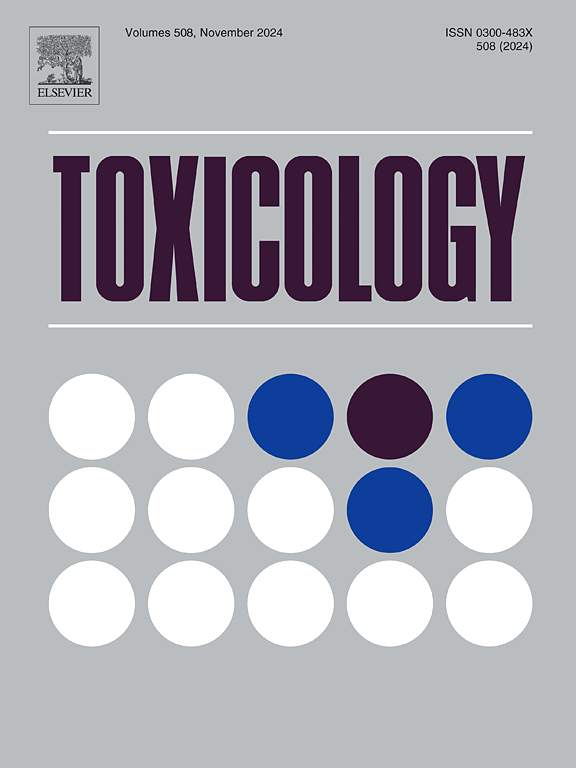Perfluoroalkyl substance pollutants disrupt microglia function and trigger transcriptional and epigenomic changes
IF 4.6
3区 医学
Q1 PHARMACOLOGY & PHARMACY
引用次数: 0
Abstract
Per- and polyfluoroalkyl substances (PFAS), commonly referred to as “forever chemicals”, are widely utilized in various industries and consumer products worldwide. Their exposure has been associated with numerous diseases and malignancies, including neurodevelopmental and neurodegenerative disorders. However, the molecular mechanisms underlying PFAS-induced adverse effects on the central nervous system (CNS) remain poorly understood. In this study, we investigated the transcriptomic and epigenetic changes in microglia exposed to perfluorooctane sulfonate (PFOS), a prevalent PFAS compound. Our findings demonstrate that 24-hour PFOS exposure (25 and 50 µM) disrupts the microglial transcriptome and compromises their homeostatic state, marked by increased inflammation and impaired actin cytoskeleton remodeling. Comparative analysis with in vivo transcriptional states revealed that PFOS-exposed microglia exhibit gene expression profiles resembling those of aged microglia. Additionally, profiling of active chromatin regions uncovered significant alterations in the H3K27ac landscape in PFOS-exposed microglia. Notably, these epigenetic disruptions persisted even after PFOS withdrawal, with a subset of H3K27ac-enriched regions remaining altered, suggesting the presence of lasting epigenetic scars. Furthermore, transcription factor analysis implicated the AP-1 and TEAD families as potential upstream regulators connecting the altered chromatin landscape to transcriptomic changes. Collectively, these findings provide mechanistic insights into how PFOS exposure disrupts microglial function and highlight its potential role in exacerbating neurodegenerative processes.
全氟烷基物质污染物破坏小胶质细胞功能并引发转录和表观基因组变化。
全氟烷基和多氟烷基物质通常被称为“永远的化学品”,在世界各地的各种工业和消费品中得到广泛应用。它们的暴露与许多疾病和恶性肿瘤有关,包括神经发育和神经退行性疾病。然而,pfas诱导中枢神经系统(CNS)不良反应的分子机制尚不清楚。在这项研究中,我们研究了暴露于全氟辛烷磺酸(PFOS)(一种普遍的PFAS化合物)的小胶质细胞的转录组学和表观遗传学变化。我们的研究结果表明,24小时的全氟辛烷磺酸暴露(25µM和50µM)会破坏小胶质细胞转录组并破坏其稳态状态,其特征是炎症增加和肌动蛋白细胞骨架重塑受损。与体内转录状态的比较分析表明,pfos暴露的小胶质细胞表现出与老年小胶质细胞相似的基因表达谱。此外,对活性染色质区域的分析揭示了暴露于全氟辛烷磺酸的小胶质细胞中H3K27ac景观的显著变化。值得注意的是,即使在停用PFOS后,这些表观遗传破坏仍然存在,h3k27ac富集区域的一个子集仍然改变,表明存在持久的表观遗传疤痕。此外,转录因子分析暗示AP-1和TEAD家族是连接染色质改变和转录组变化的潜在上游调节因子。总的来说,这些发现提供了全氟辛烷磺酸暴露如何破坏小胶质细胞功能的机制见解,并强调了其在加剧神经退行性过程中的潜在作用。
本文章由计算机程序翻译,如有差异,请以英文原文为准。
求助全文
约1分钟内获得全文
求助全文
来源期刊

Toxicology
医学-毒理学
CiteScore
7.80
自引率
4.40%
发文量
222
审稿时长
23 days
期刊介绍:
Toxicology is an international, peer-reviewed journal that publishes only the highest quality original scientific research and critical reviews describing hypothesis-based investigations into mechanisms of toxicity associated with exposures to xenobiotic chemicals, particularly as it relates to human health. In this respect "mechanisms" is defined on both the macro (e.g. physiological, biological, kinetic, species, sex, etc.) and molecular (genomic, transcriptomic, metabolic, etc.) scale. Emphasis is placed on findings that identify novel hazards and that can be extrapolated to exposures and mechanisms that are relevant to estimating human risk. Toxicology also publishes brief communications, personal commentaries and opinion articles, as well as concise expert reviews on contemporary topics. All research and review articles published in Toxicology are subject to rigorous peer review. Authors are asked to contact the Editor-in-Chief prior to submitting review articles or commentaries for consideration for publication in Toxicology.
 求助内容:
求助内容: 应助结果提醒方式:
应助结果提醒方式:


